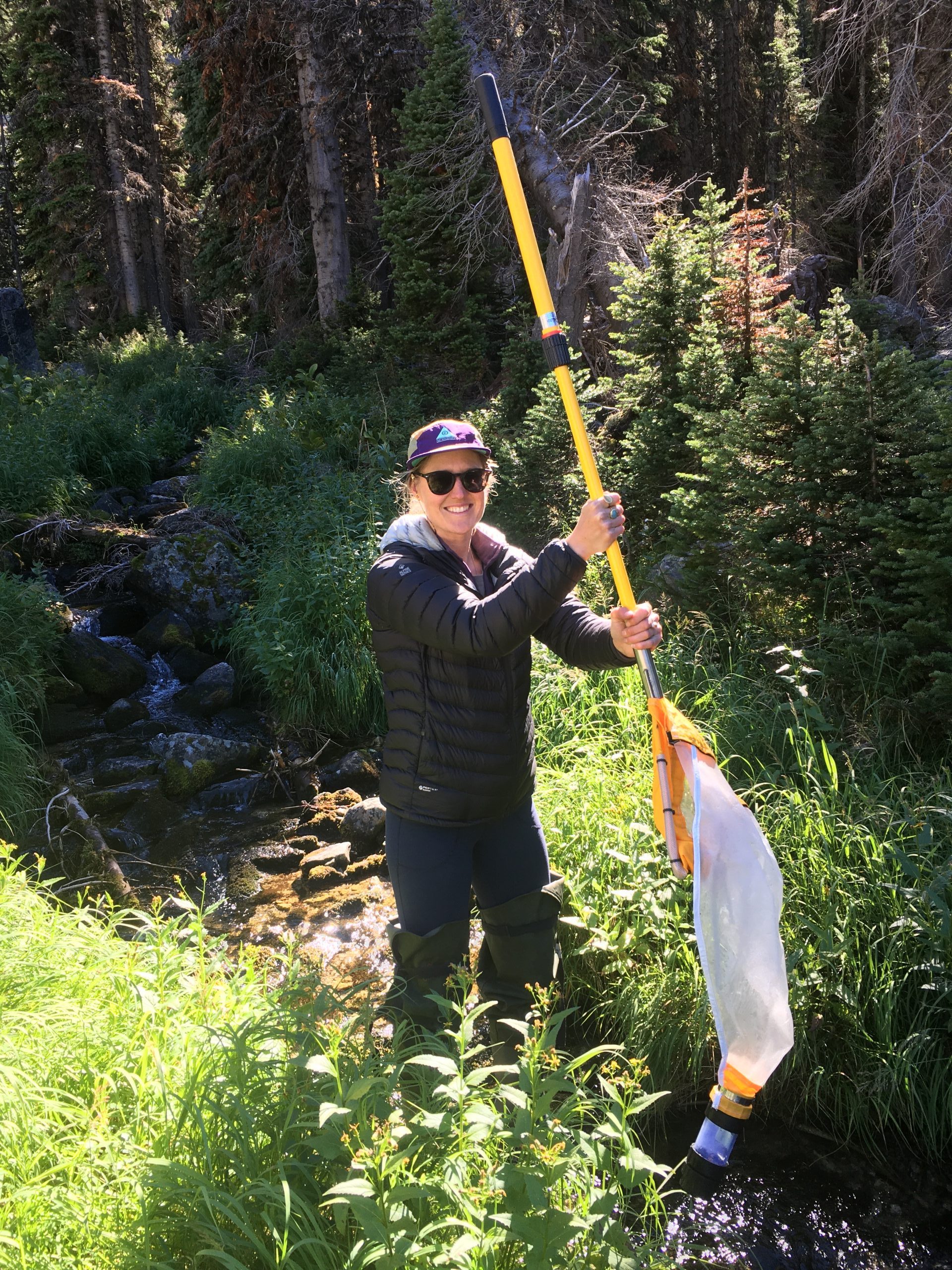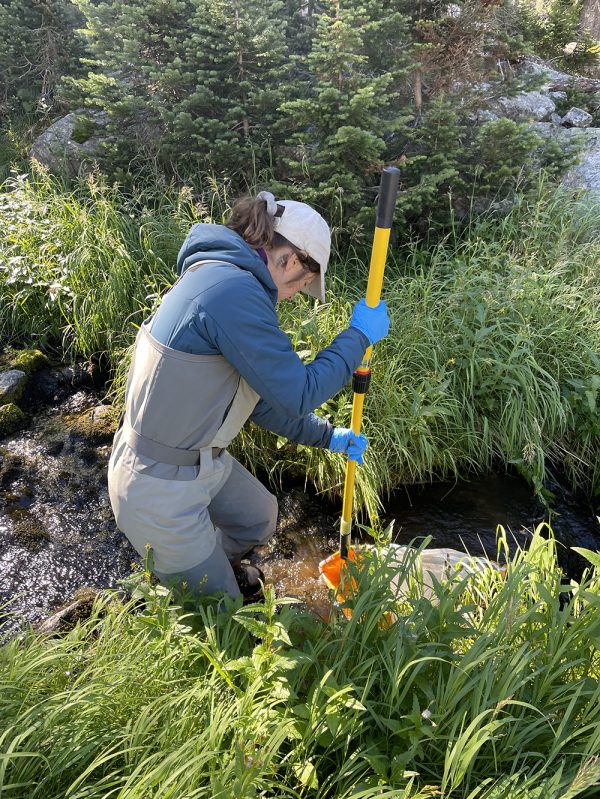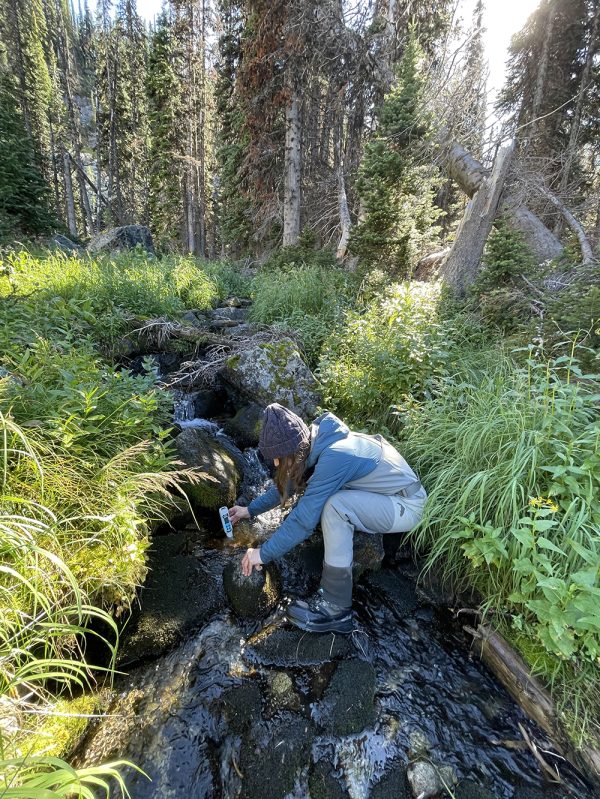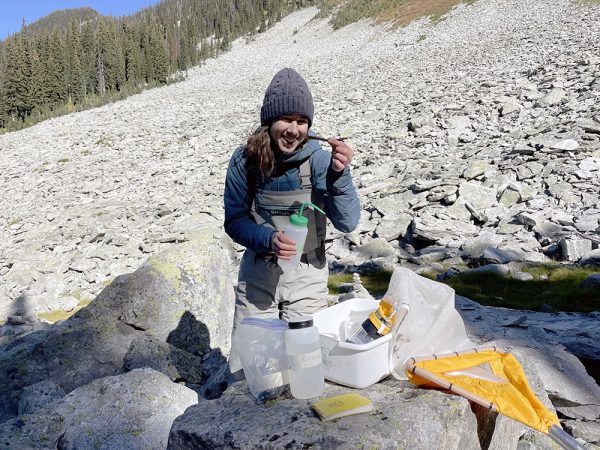High elevation creek biomonitoring for climate impacts

High Elevation Program Assistant Claire Pollock-Hall collects macroinvertebrate samples.
High elevation ecosystems are especially sensitive to climate change impacts. Research has found that temperatures at higher altitudes are increasing even more rapidly than those at lower altitudes. Living Lakes Canada’s High Elevation Monitoring Program is focused on reducing data gaps which may assist in identifying climate impacts and better understand their effects on these sensitive areas and ultimately our watersheds.
Living Lakes Canada is in the process of identifying reference sites throughout the Columbia Basin from which to develop baseline data on the health of high elevation streams.
On September 20, our High Elevation Program Manager Heather Shaw and Program Assistant, Claire Pollock-Hall hiked up to collect macroinvertebrate samples using the CABIN and STREAM protocols at Huss creek above Shannon lake. Samples from this site will be used to develop a reference model, to which ‘test site’ data may be compared.
Further, long-term monitoring of this site will help in observing trends related to climate change that may be used to predict climate impacts on similar sites within the Columbia Basin.
As winter approaches our field season will end and all the watershed data will be compiled. Data sets will be available on the Columbia Basin Water Hub and available for the public to review so keep an eye out!










